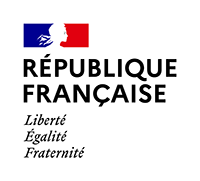This article is part of the folder : Dossier "Vers des rues apaisées"
See the 28 news related to this folder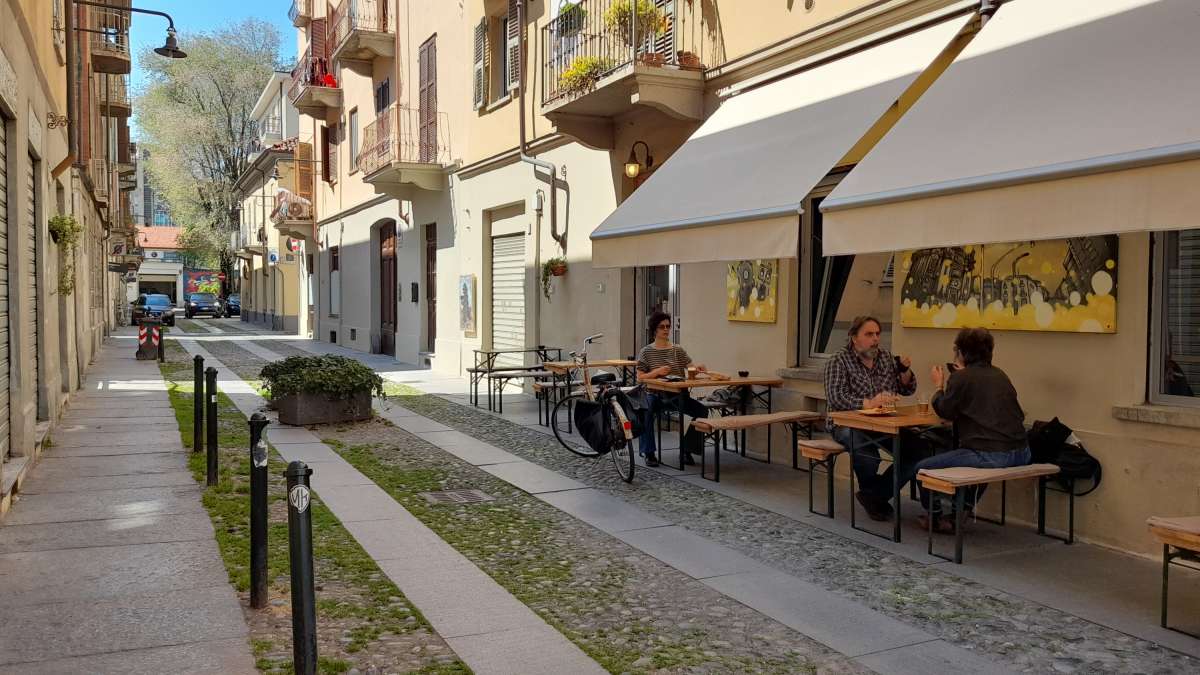
What is a limited traffic zone (ZTL)? What is the current status in France?
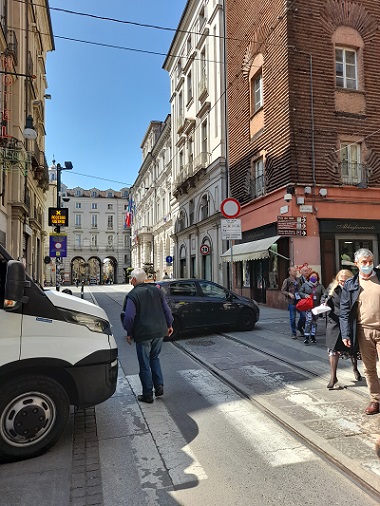
The limited traffic zone (ZTL) does not have official status in France, contrary to the French highway code and Italian practices. Physically and practically, these "zones" represent a sector, or even a neighbourhood.
The principle of an LTA is to make a set of streets accessible only to buses, bicycles cabs and authorized vehicles (residents, merchants...). The objective is to reduce traffic while keeping the rules of sharing a classic street (no absolute priority for pedestrians as proposed by the status of a pedestrian area). The sound and visual atmosphere and the environmental quality are thus modified for the benefit of the living environment. The traffic plan is adapted to reappropriate the streets by the accepted modes of transport.
In France, the regulatory basis for allowing the reservation of access to a street is set out in the general code of local authorities. However, there is no definition of of the ZTL in the highway code, nor dedicated signs, nor is there a ticketing system for the limited traffic zone (punctual or automated). This absence does not allow to have an education on this topic to all the inhabitants of the country unlike in Italy where the concept is known on the whole territory.
Based on the principle of the ZTL, Nantes and then Grenoble have created their own ZTL limited to an axis rather than a zone, by adapting existing by adapting existing regulations. In this way, they have demonstrated the effectiveness of this type of approach. For example, on a previously busy boulevard, traffic was restricted to cyclists and limited to cyclists and public transport, and of the 10,000 motorized vehicles previously present, 5,000 vehicles have "evaporated", 3,500 were transferred to other modes, and 1,500 to other other routes.
Locally the atmosphere could be completely modified, ensuring a reclaiming of the public space. However, the absence of dedicated regulations complicates communication and education about the possibility of expand to larger areas.
Unlike the Low Emission Zone (LEZ), which simply limits access to vehicles based on their pollutant emissions, the LTZ aims to reduce the occupation of public space by parked and moving vehicles and travel outside of public transportation and active modes.
Cuneo: the ZTL, a tool to improve the attractiveness of a medium-sized city center
About ten years ago, the historic downtown of this city of 60,000 people was marked by the presence of run-down buildings buildings and was overrun by traffic and parking.
In 2012, the municipal team began the requalification of the Via Roma (which is the main artery of the city, a structuring axis already present in the Middle Ages) into a pedestrian masterpiece:
-
the redevelopment work of this very wide street (12 to 19 m from facade to facade to facade, with large spaces under arcades on both sides) consisted of the renovation of the facades and the improvement of the accesses to the shops, the burying of the networks networks, renewal of the pavements over a linear distance of nearly 700 meters
-
revision of the traffic plan with the development of perimeter parking lots and the implementation of the pedestrian zone and the ZTL.
The LTA is larger than the pedestrian zone and covers a perimeter of 100 ha. It is active every day from 8:30 pm to 7 am.
Turin: a long-standing policy, which supports the requalification of public spaces
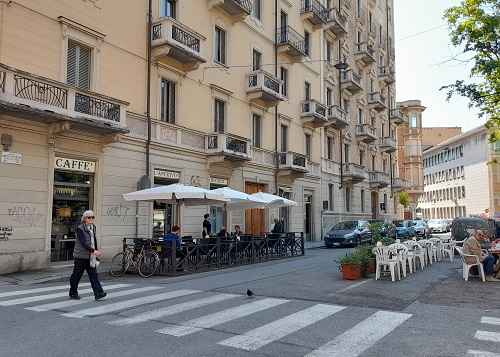
The problem of traffic restrictions in this city of 850,000 inhabitants, in connection with congestion on the one hand, and poor air quality on the other (geographical location in the Po Valley, where air quality is one of the of the most degraded in Europe : the problems of pollutant emissions are superimposed by the difficulties linked to the concentration of pollutants). The desire is twofold, air quality but also fewer motorized vehicles that clutter up public spaces in order to be able to redistribute them.
The first measures date back to the 1990s: definition of the perimeter (1994), implementation of electronic gates (1999), then extension of the ZTL in 2010.
One of the peculiarities of the Turin LTOs is their differentiation of schedules according to their perimeter :
-
The central LTA covers 260 ha with 36 electronic accesses. Access is is restricted to the morning rush hour between 7:30 a.m. and 10:00 am;
-
the nighttime LTO (restrictions from 7:30 pm to 7:30 am);
-
the public transport ZTL (restrictions from 7:00 am to 8:00 pm).
As in Cuneo, a good part of the central LTA is in pedestrian area (about ¼). The acceptability of these measures was difficult for the merchants at the beginning of the project, although they would not consider a "step backwards" today.
Residents of the central LTA (population 31,000) have special permits, which also give them which also give them a pass to residential parking. There is very little underground parking downtown, and regulations requiring parking in buildings came later than in France.
The results of these ZTLs are a modal share of individual motor vehicles that has of motorized private vehicles has fallen from 78% to 48% in about ten years.
These traffic restriction measures and the evolution of modal shares have made it possible to undertake to projects to promote active modes of transport and public transport. Some of these projects are described in the document below.
Milan: an overlap of zones with different objectives (low emission and LTZ) and strong issues related to urban logistics
In this city with a population of 1.4 million inhabitants (2nd largest city in Italy) with a highly developed urban area, to reconcile sustainable mobility, control of urban development urban development and taking into account environmental issues is particularly complex.
The urbanization and the transportation network have been following a concentric pattern, with several well-marked "rings". In order to take into account these different "strata", several LTAs have been have been set up, at different scales.
The tightest and most central LTA: Ramparts LTA, "area C"
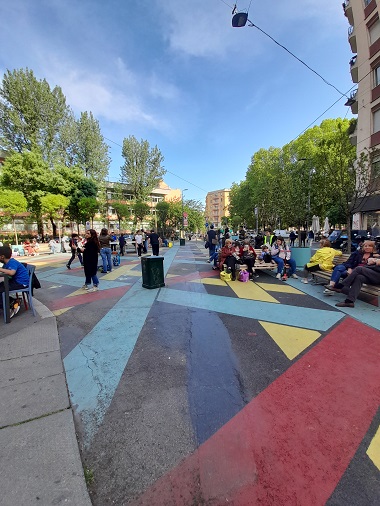
Initially, the purpose of the LTO was more related to air quality than to traffic reduction. From 2008 until 2012, an Ecopass system was implemented and users paid according to the pollution level of their vehicle. This system has given good results on congestion and the environment. But many people had changed vehicles and could finally get in without paying. In In 2011, the city was left with the same level of congestion as in 2007. After a referendum among the citizens of Milan, the city chose to evolve the traffic zone to not only address air quality but also the volume of motorized vehicles motorized vehicles that move around.
Residents were in favour of a "congestion charge" system in addition to the "pollution charge" system: even low-emission vehicles are subject to access restrictions.
Residents within the ZTL area must pay a yearly pass. They are allowed to pass 40 times a year for free, and pay 2 for each additional day they pass. 80 of them do not use the 40 passes in a year.
The ZTL has 43 electronic gates.
The larger LTZ: Low Emission LTZ Low Emission Zone, "area B
The perimeter of this ZTL is larger (it 97% of the population) and its operation is more similar to that of low emission zone. The LTA includes 188 electronic gates.
Unlike the "area C" ZTL, the user do not pay to enter but must respect the environmental rules.
As in Turin, the reduction in traffic due to the implementation of the various ZTLs in Milan (nearly 40% less traffic in the "area C" ZTL) has been an opportunity to the opportunity to rebalance the sharing of the to the benefit of active modes. The health crisis has reinforced this dynamic, with numerous tactical urban planning projects, which must now be that must now be perpetuated or developed (see document below).
What signage is in place in Italy?
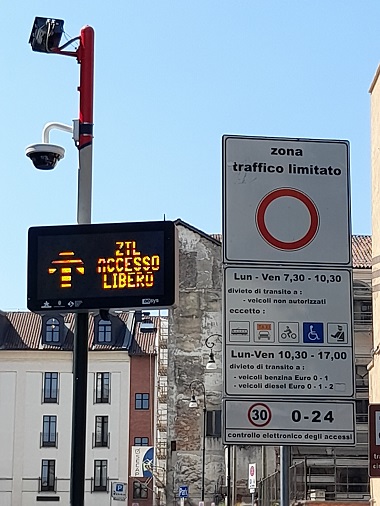
The entry in the ZTL is indicated in general :
-
On the right, by a sign indicating time and vehicle restrictions. There are no markings on the ground.
-
On the left, this device is completed by a variable message sign whose mast is often also the support of the surveillance cameras.
In Turin, the streets that allow you to enter the ZTL are mostly one-way streets. A another sign has been created to give visibility to these "gateways": A yellow and blue sign with a more synthetic message and announcing that the zone is monitored by cameras.
In Milan, on the main roads with several traffic lanes, gantries are installed and support the surveillance cameras of the different lanes.
The term and the abbreviation ZTL is well known by Italians. If the visit concerned 3 cities in Northern Italy of Northern Italy, the ZTLs are present on the whole Italian territory for all sizes of cities.
Automatic ticketing: a system that seems to be effective and requires careful consideration of data protection
In Italy, automatic ticketing is highly developed. The control system system has two cameras and retains two images automatically, one to identify the license plate of the one to identify the vehicle's license plate, the other to identify the context. By comparing the plate with a "white" list of authorized vehicles (which is updated daily) vehicles (which is updated daily), the vehicles in violation are identified. A validation is performed by operators for the fines.
In Turin, it is the community who issues fines and collects them. The penalty is 90 € and the local authority collects between 400 and 500 fines per day. In Milan, the fines amount to à 85€. Part of the money must be reinvested in measures to improve travel safety.
The exchanges with Swiss and French partners raised many questions: what is the acceptability of this automated for this automated control outside Italy? The Italian system is not permanent. What would happen to a permanent control? Can we take the image of a non-offending vehicle? The ZTL can work with punctual controls that provided that communication actions are developed so that its interest is appropriated by all. If this makes it possible to move forward with a certain effectiveness (Grenoble, Nantes), should we go further?
In light of these three experiences, what can we learn from them and what questions remain?
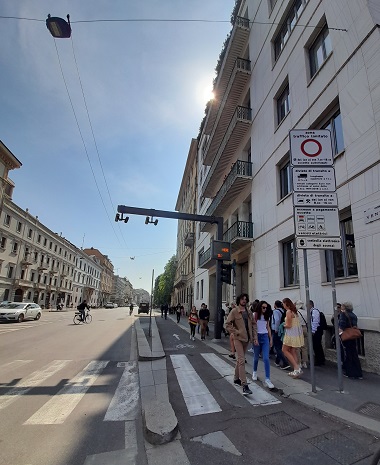
The main lessons learned from these Italian experiences are the following:
-
The cities that have implemented these zones have also made significant progress on pedestrianization. When these zones are created on a neighbourhood scale a good part of the perimeter is already in a pedestrian zone.
-
The LTAs do not require the cross-sectional profile; they can be can be developed in a "light" way without heavy interventions. heavy interventions.
-
Urban logistics is a high-stakes issue. From solutions encouraging the change of vehicle to electric vehicles, as well as schedules or "specific rights of way" can be implemented.
-
The institution of this type of zone requires a review of the traffic plan, especially to provide and signa for "escape routes" and to provide facilities for active modes of transport to allow for transfers.
-
They have led to a significant modal shift to active modes, and an improvement in the commercial speed of public transport.
Points to watch out for:
-
Need for clarity of objectives in relation to low emission zones (LEZs).
-
Need for legibility of these rules of these rules, of the perimeter (especially zones) and the different schedules.
The points of surprise on the three cases presented in Italy:
-
In spite of a relatively undeveloped the residents' support for the ZTLs.
-
Automatic monitoring devices which seem to be accepted by the population.
-
Putting motorized two-wheelers "on the same of motorized two-wheelers, which have the same rights as cyclists, at least for the cities visited.
-
Quiet zones, which favour local activities (shops, bars, restaurants, school zones, etc.) and which could also be (the public spaces in the three cities visited are of a rather "mineral" character).
The three visits confirmed the interest of this tool for calming down downtown and neighbourhoods, improving improve the living environment, promote local activities and tourist development. The feedback from the visits have shown that, regardless of the size of the city or town concerned, the ZTLs give very satisfactory results, with a reduction in motorized traffic and a significant modal shift in favour of active modes and public public transport.
Article written by Marion AILLOUD (in charge of the Public Space and and urban roads) and Benoit HIRON (in charge of the Transportation Safety sector)
In the folder : Dossier "Vers des rues apaisées"
